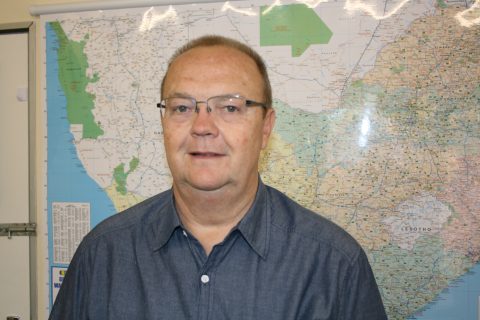SA Mining PR
Legal Requirements For Borrow Pits
Even despite the toughest economic circumstances, or urgent requirements for readily available sand and aggregates, the rule of law still applies and road construction companies and other construction enterprises need to ensure that they are compliant with all mining related legislation, as well as water, environmental and other legislation. Local bylaws also need to be observed.

Nico Pienaar, director of surface mining association, ASPASA, says quarries and borrow pits are essential to keeping the country’s construction industry supplied, especially in light of backlogs resulting from the Covid-19 lockdown. However, careful care needs to be exercised when operating these as they are often situated close to built-up areas or near to roads and railway lines to ensure quick and easy supply.
“Therefore, community concerns need to be top-of-the-mind in order to ensure a harmonious and mutually beneficial relationship exists throughout the lifecycle of the operation. If operated correctly there should be little cause for concern and ASPASA members especially are dutybound to work within the confines of the country’s stringent environmental legislation, as well as uphold strict standards imposed by the association relating to safety, health and environment.”
Concerns founded
Pienaar says that unfortunately, the public has a right to be sceptical of new quarries within their neighbourhoods as past practices left a lot to be desired. Landscapes were scarred, waterways polluted and nearby residents had to bear the brunt of damaging blast, dust pollution and degraded roadways as a result of overladen trucks.
Fortunately, things have changed and strict legislation exists to protect the public, as well as the environment from these damaging practices. Mines and quarries nowadays are far less likely to get away with damaging practices. Furthermore, communities are increasingly aware of their rights.
New age quarry owners and managers are more sensitive to community expectations and even in highly competitive operating areas, they still have tight controls are in place to ensure legislation and standards are adhered to. They also ensure communities and the environment aren’t negatively impacted in order to ensure their good reputations and so ensure that they can operate unimpeded.
Pienaar reminds the public that strict guidelines do exist both from a legislative point, as well the association’s own standards. These are in place to assist communities, as well as the operators involved, to ensure planning, development, operation, rehabilitation and final decommissioning of quarries and borrow pits are done correctly. The following simple controls exist:
- Application and approval
Several different Acts govern the approval of quarry operations depending on location, land tenure and likely impact. These in turn determine the approval procedure to be followed and the degree of detail which must be provided in a licence application.
- Planning and development
Site planning needs to be done in association with a development application supported by all relevant information required to get approval. Only once this has been obtained can the plan be implemented according to site development steps laid out. When these have been met the operation can go ahead.
- Site operation and controls.
Once the quarry operation is in progress, careful environmental management must be sustained to ensure dust emissions and noise impacts do not become a significant issue. At the same time rehabilitation must be planned to dovetail with quarry operations.
- Rehabilitation
This should be done progressively where the operation allows staged development and subsequent closure and rehabilitation of different areas. Or it can take place at the end of the total operation if it is a short-term project or staged development is not possible.
- Decommissioning
When quarry operations and any associated processing are completed the area should be tidied up, all facilities not otherwise required should be removed and rehabilitation should be completed on the remaining disturbed areas.
- Short-term alternatives
For short- term quarries and borrow pits the range and intensity of measures drawn will generally be modest. In these cases, the staging of developments may not be necessary if the quarry or pit has a life less than one or two years, and total rehabilitation might be carried out as part of site decommissioning.
For more information visit: www.aspasa.co.za.







 Sign-up and receive the Business Media MAGS newsletter OR SA Mining newsletter straight to your inbox.
Sign-up and receive the Business Media MAGS newsletter OR SA Mining newsletter straight to your inbox.